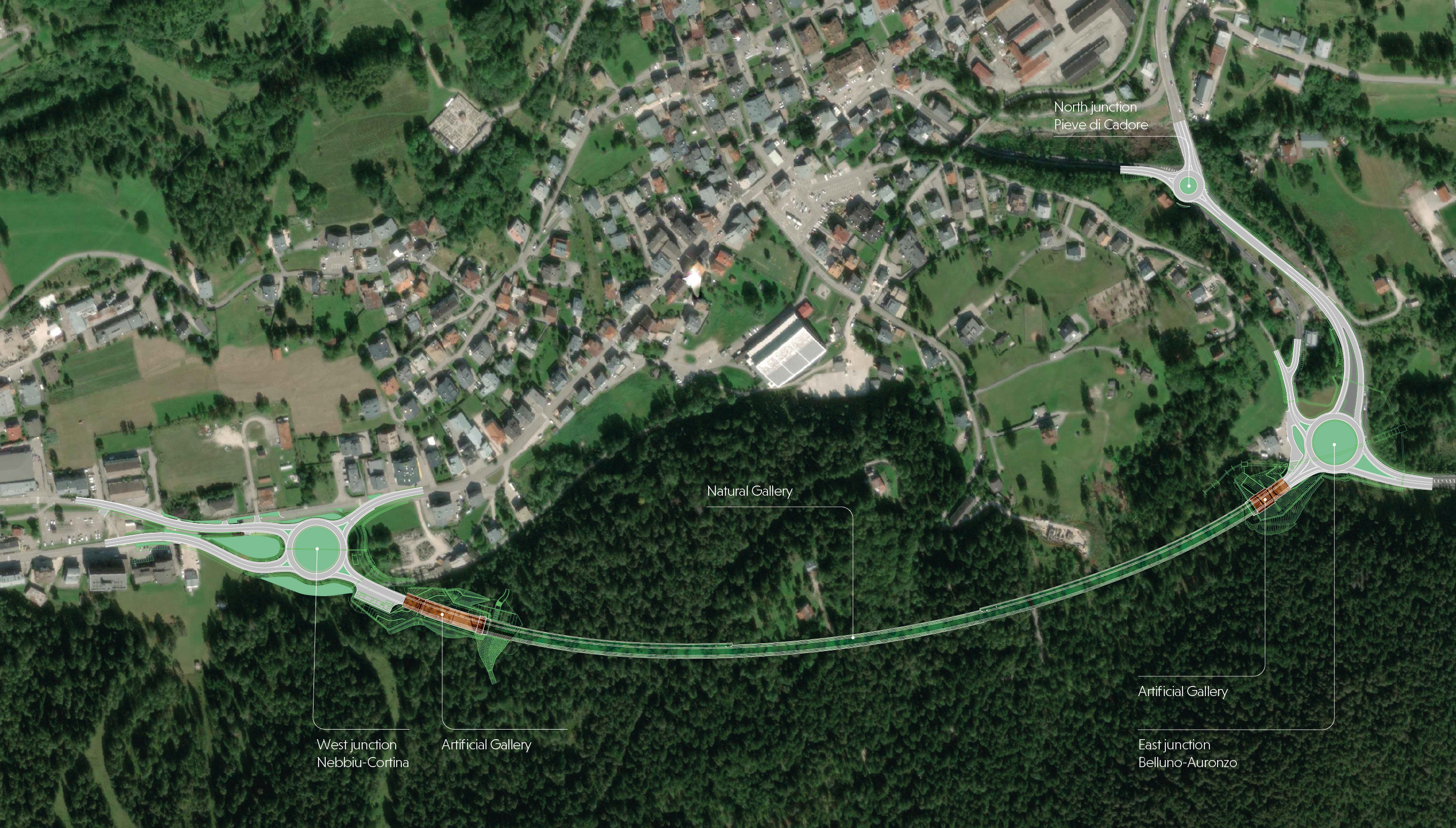Milan Cortina 2026 Winter Olympic and Paralympic Games
Civil engineering for large-scale events
The Ministries of the Economy and Finance, and Infrastructure and Transport, with Lombardy Region, Veneto Region and the autonomous provinces of Trento and Bolzano were appointed to carry out the works essential for making the existing infrastructure indicated in the candidacy dossier efficient and appropriate for the Milan Cortina 2026 Winter Olympic and Paralympic Games in Decree Law 16 dated 11 March 2020.
Cancellation of level crossings
Among the works set out by the Decree Law there is the cancellation of level crossings on Stelvio Strada Statale 38 (Stelvio State Road 38) along the Milan-Tirano railway line. The Alternative Projects Feasibility Document curated by NET Engineering set out the elimination of 14 level crossings in the Sondrio-Tirano section. NET Engineering developed the design solutions, assessing each alternative from the quality, environmental, technical and economic points of view. When necessary, the hydrologic and hydraulic context of the area where the work would be carried out was also analysed and the results influenced specific design choices.
After the selection of the alternative designs, the Technical Economic Feasibility Project of the chosen solutions was developed. The Final Designs are currently being implemented.
San Vito di Cadore
In the same context, Net Engineering was responsible for planning the operations on Alemagna Strada Statale 51 for the elimination of various critical points affecting safety and the efficiency of the road network. In detail, NET Engineering produced the executive design of the SS 51 variants for crossing the municipalities of San Vito di Cadore and Tai di Cadore (Belluno).
The project devised for crossing San Vito di Cadore sets out the creation of a C2 category road (secondary suburban road) to by-pass the residential centre by separating from the current Strada Statale 500 metres to the south and north of the town. Two roundabouts will be created near the two junctions of the new road on both the Cortina and Belluno sides which will connect the variant with the SS 51 and other secondary roads. The new route also plans the creation of four artificial anti-noise tunnels, a viaduct, bridge over the river Ru Sec with a span of 80 metres, a flyover, a cycle-pedestrian underpass and various other supporting works including some of considerable height.

Tai di Cadore
The project devised for crossing the centre of Tai di Cadore, created in collaboration with the partners Systra SWS and VAMS Ingegneria, plans the creation of a new natural tunnel creating a paved by-pass as a main work. Two main roundabouts at the mouths and a new reworking of the north link for Pieve di Cadore have also been designed. The creation of new intersections with existing junctions, the remodulation of the cycle path, the hydrological organisation of three canals, technological systems and minor support works for the roadworks are also planned to ensure the correct usability of the operation.

Attention to the region
All the projects curated by NET Engineering under the creation of works for accessibility to Cortina were developed starting from special attention to the region and its inhabitants.
The impact on the region of both construction work and operation were assessed for each alternative design. The choice was made to safeguard certain habitats from noise, to avoid specific works in some periods of the year so that the habits and behaviour of the local fauna were not affected, and to reduce noise pollution during the construction phase, towards sensitive receptors, etc. while the construction site was active.
Great attention was also given to the details of the choice of finishing materials,
such as corten steel, with the aim of increasing the environmental mitigation works and acceptance by the population. Discussions with stakeholders, conducted by the clients for both the projects eliminating level crossings and those adapting the SS 51, were essential in choosing the alternatives and the definition of the design details.
The Senes viaduct, developed to bypass the municipality of San Vito di Cadore is an example. The initial suggestion developed in the Final Design was to build a bridge with four spans to improve the visual aspect. This was discarded after public engagement in favour of an alternative design with the construction of a viaduct with just two spans and the replacement of part of the work with stone and vegetation-clad walls. It’s therefore clear how assessment of the regional impact – most importantly the landscape and visual impact of the works, must involve the people with daily lives in the areas involved in the projects.

